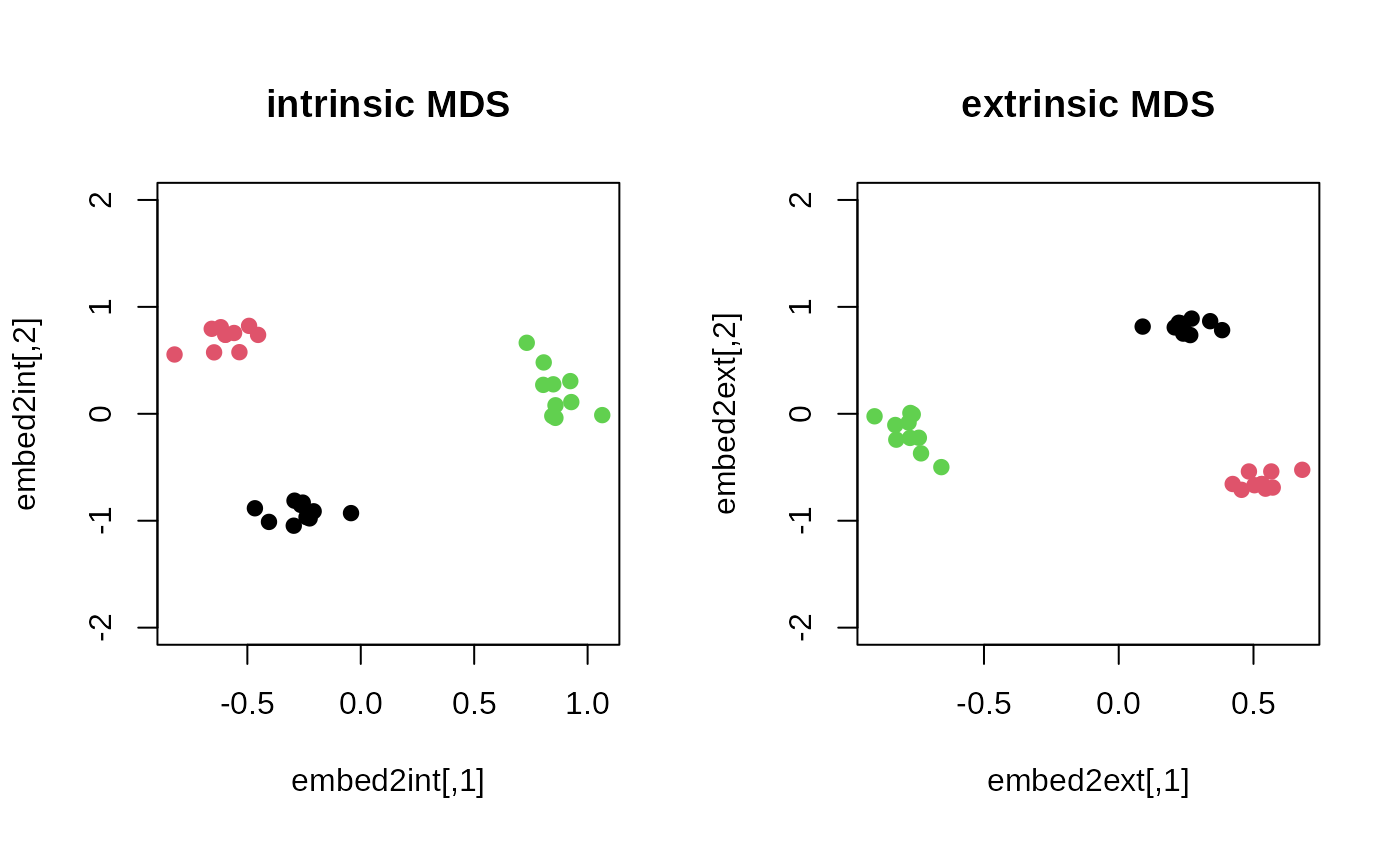Given \(N\) observations \(X_1, X_2, \ldots, X_N \in \mathcal{M}\),
apply multidimensional scaling to get low-dimensional embedding
in Euclidean space. Usually, ndim=2,3 are chosen for visualization.
Usage
riem.mds(riemobj, ndim = 2, geometry = c("intrinsic", "extrinsic"))Value
a named list containing
- embed
an \((N\times ndim)\) matrix whose rows are embedded observations.
- stress
discrepancy between embedded and original distances as a measure of error.
References
Torgerson WS (1952). “Multidimensional scaling: I. Theory and method.” Psychometrika, 17(4), 401–419. ISSN 0033-3123, 1860-0980.
Examples
#-------------------------------------------------------------------
# Example on Sphere : a dataset with three types
#
# 10 perturbed data points near (1,0,0) on S^2 in R^3
# 10 perturbed data points near (0,1,0) on S^2 in R^3
# 10 perturbed data points near (0,0,1) on S^2 in R^3
#-------------------------------------------------------------------
## GENERATE DATA
mydata = list()
for (i in 1:10){
tgt = c(1, stats::rnorm(2, sd=0.1))
mydata[[i]] = tgt/sqrt(sum(tgt^2))
}
for (i in 11:20){
tgt = c(rnorm(1,sd=0.1),1,rnorm(1,sd=0.1))
mydata[[i]] = tgt/sqrt(sum(tgt^2))
}
for (i in 21:30){
tgt = c(stats::rnorm(2, sd=0.1), 1)
mydata[[i]] = tgt/sqrt(sum(tgt^2))
}
myriem = wrap.sphere(mydata)
mylabs = rep(c(1,2,3), each=10)
## MDS EMBEDDING WITH TWO GEOMETRIES
embed2int = riem.mds(myriem, geometry="intrinsic")$embed
embed2ext = riem.mds(myriem, geometry="extrinsic")$embed
## VISUALIZE
opar = par(no.readonly=TRUE)
par(mfrow=c(1,2), pty="s")
plot(embed2int, main="intrinsic MDS", ylim=c(-2,2), col=mylabs, pch=19)
plot(embed2ext, main="extrinsic MDS", ylim=c(-2,2), col=mylabs, pch=19)
 par(opar)
par(opar)
